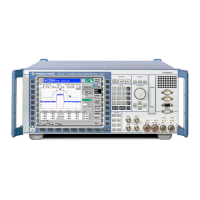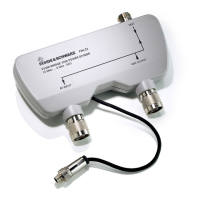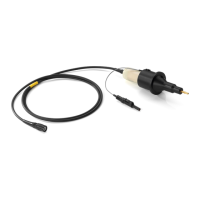Special Terms and Notation CMU
1100.4903.12 5.42 E-8
NAN NAN (not a number) is generally used to represent missing data, e.g. if a por-
tion of a trace has not been acquired yet. It is also returned after invalid
mathematical operations such as division by zero. As defined in the SCPI stan-
dard, NAN is represented as 9.91 E 37.
INV INV (invalid) is returned if a limit check is performed without defining the appro-
priate tolerance values.
Upper / lower
case Upper/lower case characters characterize the long and short form of the key-
words in a command. The short form consists of all upper-case characters, the
long form of all upper case plus all lower case characters. On the CMU, either
the short form or the long form are allowed; mixed forms will generally not be
recognized. Either the short form or the long form are permissible. The instru-
ment itself does not distinguish upper case and lower case characters.
Special characters
| A vertical stroke in the parameter list characterizes alternative parameter set-
tings. Only one of the parameters separated by | must be selected.
Example: The following command has two alternative settings:
TRIGger:SEQuence:DEFault ON | OFF
[ ] Key words in square brackets can be omitted when composing the command
header (see Chapter 5 of the CMU manual, section "Structure of a Command").
The complete command must be recognized by the instrument for reasons of
compatibility with the SCPI standard.
Parameters in square brackets are optional as well. They may be entered in the
command or omitted.
{ } Braces or curly brackets enclose one or more parameters that may be included
zero or more times.
<nr> This symbol stands for a numeric suffix, e.g. an enumeration index for input
and output connectors.
Lists of commands
Command:
The Command column of the table contains all remote control commands
arranged according to their function (configurations or measurement ob-
jects). Within a section, the commands are listed in alphabetical order.
Parameters:
The Parameter column lists the parameters of the commands.
Remarks:
The Remarks column gives additional information about the commands
which
− Have no query form (no query)
− Have only a query form (query only)
− Can be used both as setting commands and as queries (with query, this
applies to all commands belonging to none of the two preceding catego-
ries)
Alphabetical
Lists
Chapter 6 concludes with alphabetical command lists for both test modes.

